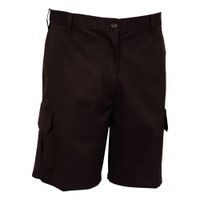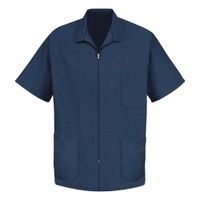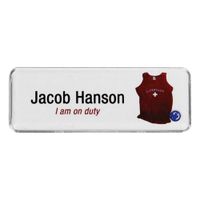Call +(254) 703 030 000 / 751 483 999 / 721 704 777
- Home
- Furnishings Appliances Hospitality
- Hospitality Supplies
- Hospitality Uniforms
Frequently Asked Questions
What are the key elements to consider when designing hospitality uniforms?
When designing hospitality uniforms, key elements to consider include:
1. **Functionality**: Uniforms should be practical and suitable for the specific tasks employees perform. Consider the range of motion, ease of wear, and the inclusion of functional features like pockets.
2. **Comfort**: Choose breathable, lightweight, and flexible fabrics to ensure comfort during long shifts. Consider climate and work environment to select appropriate materials.
3. **Durability**: Select high-quality, durable fabrics that withstand frequent washing and wear. Reinforced stitching and quality finishes can enhance longevity.
4. **Brand Identity**: Uniforms should reflect the brand’s image and values. Use colors, logos, and styles that align with the brand’s aesthetic and message.
5. **Professional Appearance**: Ensure uniforms convey professionalism and cleanliness. Tailored fits and neat designs contribute to a polished look.
6. **Safety**: Incorporate safety features where necessary, such as non-slip shoes or flame-resistant materials, depending on the work environment.
7. **Inclusivity**: Offer a range of sizes and styles to accommodate diverse body types and preferences. Consider gender-neutral options to promote inclusivity.
8. **Ease of Maintenance**: Choose fabrics that are easy to clean and maintain. Stain-resistant and wrinkle-free materials can reduce upkeep time and costs.
9. **Cost-effectiveness**: Balance quality with budget constraints. Consider long-term costs, including maintenance and replacement, when selecting materials and designs.
10. **Feedback from Staff**: Involve employees in the design process to ensure the uniforms meet their needs and preferences, enhancing satisfaction and compliance.
11. **Compliance with Regulations**: Ensure uniforms meet industry standards and regulations, such as health and safety requirements.
By considering these elements, hospitality uniforms can enhance employee performance, brand image, and customer experience.
How do hospitality uniforms contribute to a hotel's brand identity?
Hospitality uniforms play a crucial role in shaping a hotel's brand identity by serving as a visual representation of the brand's values, style, and level of service. Firstly, uniforms create a cohesive and professional appearance that aligns with the hotel's overall aesthetic, whether it be luxury, boutique, or budget-friendly. This consistency helps guests immediately recognize staff members and associate them with the hotel's brand.
Secondly, the design, color, and quality of the uniforms can reflect the hotel's positioning in the market. For instance, a high-end hotel might opt for tailored, elegant uniforms made from premium materials, signaling luxury and attention to detail. In contrast, a more casual or eco-friendly hotel might choose simpler, sustainable fabrics that convey a relaxed or environmentally conscious image.
Moreover, uniforms contribute to the guest experience by enhancing the atmosphere and setting the tone for interactions. They can evoke a sense of tradition, innovation, or cultural significance, depending on the hotel's theme. For example, a resort with a tropical theme might incorporate vibrant colors and patterns that reflect the local culture, thereby enriching the guest's immersive experience.
Additionally, well-designed uniforms can boost employee morale and confidence, leading to better service delivery. When staff feel comfortable and proud of their attire, it positively impacts their interactions with guests, reinforcing the hotel's commitment to quality service.
Finally, uniforms serve as a marketing tool, as they are often featured in promotional materials and social media, further solidifying the hotel's brand image. In summary, hospitality uniforms are a vital component of a hotel's brand identity, influencing guest perceptions, enhancing the overall experience, and supporting the hotel's market positioning.
What materials are best for hospitality uniforms to ensure comfort and durability?
The best materials for hospitality uniforms should balance comfort, durability, and ease of maintenance. Cotton is a popular choice due to its breathability and softness, making it comfortable for long shifts. It absorbs moisture well, keeping staff cool and dry. However, 100% cotton can wrinkle easily and may not be as durable over time.
Polyester is another common material, known for its durability and resistance to wrinkles and shrinking. It is easy to care for and maintains its shape well, making it ideal for uniforms that require frequent washing. However, polyester is less breathable than cotton, which can be uncomfortable in hot environments.
A blend of cotton and polyester often provides the best of both worlds. This combination offers the comfort and breathability of cotton with the durability and wrinkle resistance of polyester. A typical blend might be 65% polyester and 35% cotton, which balances comfort and longevity.
For more formal uniforms, wool or wool blends can be used. Wool is durable, wrinkle-resistant, and has natural temperature-regulating properties, making it suitable for cooler climates. However, it requires more care in cleaning and maintenance.
For specific roles, such as kitchen staff, materials like poly-cotton blends or specialized fabrics with stain-resistant and moisture-wicking properties are beneficial. These materials ensure that uniforms remain clean and comfortable despite the demanding environment.
In summary, the ideal materials for hospitality uniforms are those that combine comfort, durability, and ease of care. Cotton-polyester blends are often the best choice, providing a balance of breathability, resilience, and practicality.
How can name tags and badges be effectively integrated into hospitality uniforms?
To effectively integrate name tags and badges into hospitality uniforms, consider the following strategies:
1. **Design Harmony**: Ensure that name tags and badges complement the uniform's design. Choose colors, fonts, and materials that align with the uniform's aesthetic. For instance, if the uniform is sleek and modern, opt for minimalist badges with clean lines.
2. **Material Selection**: Use durable materials like metal or high-quality plastic for longevity. Magnetic backings can prevent damage to uniforms, while clip-on or pin options can be used for more secure attachment.
3. **Branding Consistency**: Incorporate the company logo and colors into the badge design to reinforce brand identity. This creates a cohesive look and enhances brand recognition.
4. **Positioning**: Place name tags and badges at a consistent location on the uniform, typically on the upper chest area, to ensure visibility and ease of reading. This positioning helps guests easily identify staff members.
5. **Personalization**: Include the employee's name and role on the badge to foster a personal connection with guests. This can enhance customer service by making interactions more personable.
6. **Functionality**: Consider multifunctional badges that can also serve as access cards or contain QR codes for quick information sharing. This adds utility and streamlines operations.
7. **Cultural Sensitivity**: Be mindful of cultural norms and preferences when designing name tags, especially in international settings. Ensure that names are displayed in a way that is respectful and appropriate.
8. **Feedback and Iteration**: Regularly gather feedback from staff on the practicality and comfort of wearing name tags and badges. Use this input to make necessary adjustments for improved integration.
By focusing on these elements, name tags and badges can be seamlessly integrated into hospitality uniforms, enhancing both functionality and brand presence.
What are the latest trends in hospitality uniform design?
The latest trends in hospitality uniform design focus on sustainability, comfort, inclusivity, and brand alignment.
1. **Sustainability**: Eco-friendly materials like organic cotton, recycled polyester, and bamboo are increasingly popular. Designers are opting for fabrics that reduce environmental impact, emphasizing durability and biodegradability.
2. **Comfort and Functionality**: Uniforms are being designed with ergonomic features to enhance comfort for long shifts. Stretchable fabrics, moisture-wicking properties, and breathable materials are prioritized to ensure ease of movement and temperature regulation.
3. **Inclusivity and Diversity**: Uniforms now cater to a diverse workforce, offering a range of sizes and styles that accommodate different body types and gender identities. Unisex designs and adjustable features are common to ensure a good fit for everyone.
4. **Brand Alignment and Personalization**: Uniforms are increasingly seen as an extension of a brand's identity. Customization options, such as embroidery and color schemes, are used to reflect brand aesthetics. Personalization, like name tags or unique accessories, helps staff feel valued and connected to the brand.
5. **Technology Integration**: Smart textiles and wearable technology are being incorporated into uniforms. Features like RFID tags for inventory management, or fabrics with UV protection and anti-microbial properties, are becoming more prevalent.
6. **Fashion-forward Designs**: There is a shift towards more stylish and contemporary designs that reflect current fashion trends. This includes tailored fits, modern cuts, and the use of bold colors or patterns to make uniforms more appealing and reflective of a dynamic work environment.
These trends collectively aim to enhance employee satisfaction, promote brand image, and address environmental concerns, making uniforms a strategic element in the hospitality industry.
How do hospitality uniforms enhance team camaraderie among staff?
Hospitality uniforms play a crucial role in enhancing team camaraderie among staff by fostering a sense of unity and belonging. When employees wear the same attire, it eliminates visible distinctions, promoting equality and reducing hierarchical barriers. This uniformity helps staff members feel like part of a cohesive group, which can boost morale and encourage collaboration.
Uniforms also instill a sense of pride and professionalism. When employees wear attire that represents their organization, they are more likely to take pride in their work and the team they are part of. This shared identity can lead to stronger bonds among team members, as they collectively represent the values and standards of their establishment.
Moreover, uniforms simplify the decision-making process regarding daily attire, allowing staff to focus more on their roles and responsibilities. This can lead to increased efficiency and cooperation, as team members are less distracted by personal attire choices and more aligned with the collective goals of the team.
In addition, uniforms can enhance communication and trust among staff. When everyone is dressed similarly, it can break down social barriers and encourage open dialogue, as employees are more likely to see each other as equals. This can lead to a more supportive work environment where team members are willing to help one another and share knowledge.
Finally, uniforms can serve as a visual reminder of the team’s mission and values, reinforcing a shared purpose. This can motivate staff to work together towards common objectives, strengthening team spirit and camaraderie. Overall, hospitality uniforms are a powerful tool in building a unified, motivated, and collaborative team.
What are the best practices for maintaining and cleaning hospitality uniforms?
1. **Regular Inspection**: Frequently check uniforms for stains, tears, or missing buttons to address issues promptly.
2. **Proper Sorting**: Separate uniforms by color and fabric type before washing to prevent color bleeding and fabric damage.
3. **Pre-Treatment**: Apply stain removers to affected areas before washing to ensure stains are effectively removed.
4. **Appropriate Washing**: Use the correct water temperature and detergent for the fabric type. Hot water can set stains, while cold water is gentler on fabrics.
5. **Gentle Cycle**: Opt for a gentle wash cycle to minimize wear and tear on the fabric.
6. **Avoid Overloading**: Do not overload the washing machine to ensure uniforms are cleaned thoroughly and evenly.
7. **Use Fabric Softeners Sparingly**: Excessive use can reduce the fabric's breathability and absorbency.
8. **Proper Drying**: Air-dry uniforms when possible to prevent shrinkage and fabric damage. If using a dryer, select a low heat setting.
9. **Ironing and Pressing**: Iron uniforms on the appropriate setting for the fabric to maintain a crisp appearance.
10. **Storage**: Store uniforms in a clean, dry place. Use hangers to prevent wrinkles and maintain shape.
11. **Rotation**: Have multiple sets of uniforms to allow for regular cleaning and reduce wear on individual pieces.
12. **Professional Cleaning**: For delicate or heavily soiled uniforms, consider professional cleaning services.
13. **Employee Training**: Educate staff on proper uniform care to ensure consistency and longevity.
14. **Repair and Replacement**: Promptly repair minor damages and replace uniforms when they become too worn to maintain a professional appearance.


